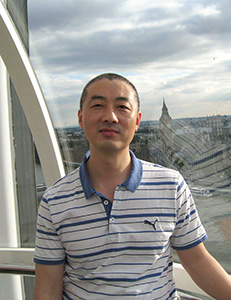Acupressure/Acupuncture for pain Relief
Understanding the mechanisms how Acupuncture and Acupressure helps with pain relief
Acupuncture and acupressure are ancient therapeutic techniques that have gained widespread recognition for their potential to alleviate various forms of pain. These practices, rooted in the principles of traditional Chinese medicine, have become a popular alternative or complementary treatment for pain relief. This article aims to explore the underlying mechanisms of acupuncture and acupressure, both of which involve the manipulation of specific points along the body’s meridian pathways, to achieve pain relief.
Acupuncture, also known as dry needling, the insertion of thin needles into specific points on the body, promotes pain relief through multiple mechanisms. First, it stimulates the release of endorphins, which are natural painkillers produced by the central nervous system. These endogenous opioids bind to specific receptors, dampening pain signals and inducing a sense of wellbeing. Additionally, acupuncture increases local blood circulation, improving oxygen and nutrient supply to the affected area. This enhanced blood flow helps dissipate inflammation and remove metabolic waste products, facilitating tissue repair and pain reduction.
In a similar way, acupressure, a non-invasive alternative to acupuncture, applies physical pressure to specific acupoints using fingers, hands, or specialized tools. As with acupuncture, acupressure stimulates the release of endorphins, triggering analgesic effects on the nervous system. Applying pressure to these points also activates the body’s parasympathetic nervous system, promoting relaxation and reducing stress. By targeting various acupoints, acupressure enhances the flow of Qi (vital energy) within the meridians, facilitating pain relief and promoting overall balance within the body.
Both acupuncture and acupressure rely on the concept of meridians, energy pathways that run throughout the body, to achieve pain relief. According to traditional Chinese medicine, pain arises when the flow of Qi is blocked or becomes imbalanced along these meridians. By stimulating acupoints, whether through needle insertion or pressure application, these modalities aim to restore the harmonious flow of Qi, facilitating healing and reducing pain. Western scientific explanations of these meridians remain elusive, but some studies suggest that the stimulation of acupoints may influence neural pathways, thereby altering pain perception and improving pain management.
Acupuncture and acupressure offer promising approaches to pain relief by leveraging the body’s natural self-healing mechanisms. Through various physiological and psychological effects, such as the release of endorphins, improved blood circulation, activation of the parasympathetic nervous system, and the restoration of Qi flow, these techniques exhibit demonstrable efficacy in reducing pain. While there is ongoing debate regarding the scientific basis and broader mechanisms of these practices, acupuncture and acupressure continue to garner attention as successful alternative therapies for pain management, benefiting individuals seeking natural, holistic approaches to pain relief. Further research in this area may shed additional light on the intricacies of these ancient practices and enhance their integration into mainstream healthcare.
Book in with Richard Liang– our acupuncturist and Traditional Chinese Medicine Doctor


